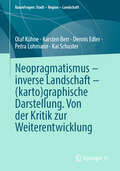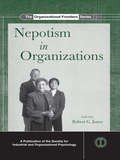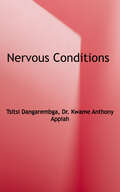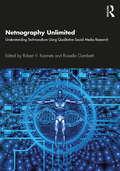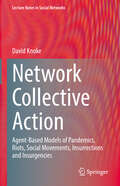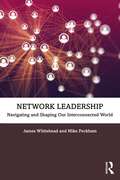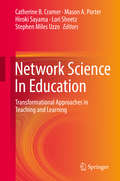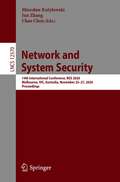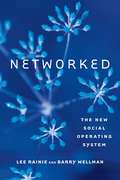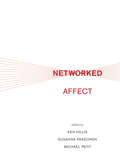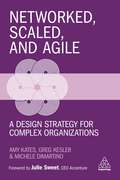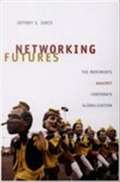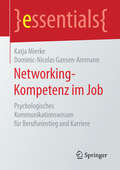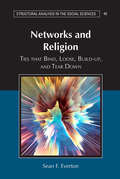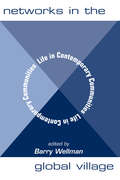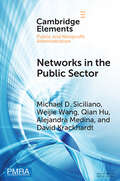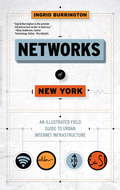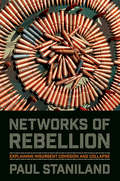- Table View
- List View
Neopragmatismus – inverse Landschaft – (RaumFragen: Stadt – Region – Landschaft)
by Olaf Kühne Karsten Berr Dennis Edler Kai Schuster Petra LohmannLandschaft erscheint stabil und beständig. So lautet zumindest eine verbreitete Auffassung von Landschaft. Diese Auffassung ignoriert die Kontingenz von Landschaft, die sich nicht allein in Vergangenheit und Zukunft, sondern auch in der Gegenwart zeigt, nicht nur in Bezug auf materielle Räume, in die ‚Landschaft‘ hineinprojiziert wird, sondern auch in Bezug auf soziale Konstruktionen und individuelles Erleben. Die Kontingenz von Landschaft wird in inversen Landschaften deutlich, die nicht unmögliche, aber auch nicht notwendige Zustände und Prozesse verdeutlichen. Damit bilden inverse Landschaften ein Werkzeug der Operationalisierung der neopragmatistischen Idee der Erweiterung von Kontingenz. Das Konzept der inversen Landschaften wird auf unterschiedlichen Weisen der Kritik unterzogen, etwa von der Binnenkritik über die meta-theoretische Kritik bis hin zur lebenspragmatischen Kritik. Diese Kritik erfolgt aus interdisziplinärer Perspektive. Ziel dieser Kritik ist eine Weiterentwicklung des Konzeptes, sowohl in Bezug auf ein differenzierteres Verständnis für die Kontingenz von Landschaft, aber auch der Frage, wie es helfen kann, praktische Probleme im Kontext ‚Landschaft‘ zu lösen.
Nepali Diaspora in a Globalised Era (Nepal and Himalayan Studies)
by Tanka B. Subba A. C. SinhaThis is one of the first books to explore Nepali diaspora in a global context, across India and other parts of South Asia, Southeast Asia, Europe, and Australia. It discusses the social, political and economic status and aspirations of the Nepali community worldwide. The essays in the volume cover a range of themes including belonging and identity politics among Nepalese migrants, representation of Indian Nepalis in literature, diasporic consciousness, forceful eviction and displacement, social movements, and ritual practices among migrant communities. Drawing attention to the lives of Nepali emigrants, the volume presents a sensitive and balanced understanding of their options and constraints, and their ambivalences about who they are. This work will be invaluable to scholars and students of Nepal studies, area studies, diaspora and migration studies, social anthropology, cultural studies and literature.
Nepotism in Organizations (SIOP Organizational Frontiers Series)
by Robert G. JonesThere is a huge elephant in the room: organizational decisions are often based on family relationships, rather than on the ‘rational’ approach advocated by many professionals. Textbooks on Human Resources, Management, Organizational Behavior, Economics, Public Administration, and a host of related areas seem to have entirely missed this important aspect of organizational decision making. This book seeks to change all of this. By clearly identifying and defining nepotism in organizations, this book pulls back the curtain on the primary basis for many of the important things that really happen in organizations, large and small. The authors skillfully weave examples of nepotism in real organizations with the usual scholarly textbook topics (hiring, leadership, employment law, career search, culture, etc.) in a way that defines an entire new field of quantitative organizational research. This new book in SIOP's Organizational Frontiers series represents the first time IO psychologists have looked at the important subject of nepotism in organizations.
Nerds: How Dorks, Dweebs, Techies, and Trekkies can save America and why they might be our Last Hope
by David Anderegg"Anderegg's clear-eyed look at a damaging cultural truism does nerds and jocks-all Americans, really-a service. " (The Washington Post). Thick glasses, socially awkward, a math whiz with a pocket protector- everyone knows what a nerd is. But where did this stereotype come from? Children aren't born knowing what a "nerd" or "geek" is, so why do they know by the age of five or six that they don't want to be one? In this revised and updated paperback edition of his thought-provoking book, family psychotherapist and psychology professor David Anderegg reveals how the systematic disparagement of "nerds" in our culture is bad for our children and even worse for America. In Nerds, Anderegg examines why science and engineering have become socially poisonous disciplines, why adults wink at the derision of "nerdy" kids, and what the cost of this rising tide of anti- intellectualism is to both our children and our nation. Drawing upon education research, psychological theory, and his own interviews with nerdy and non-nerdy kids alike, Anderegg argues that in order to prepare rising generations to compete in the global marketplace, we need to revisit how we think about "nerds. " .
Nervous Conditions
by Tsitsi DangarembgaA modern classic in the African literary canon and voted in the Top Ten Africa's 100 Best Books of the 20th Century, this novel brings to the politics of decolonization theory the energy of women's rights. An extraordinarily well-crafted work, this book is a work of vision. <p><p>Through its deft negotiation of race, class, gender and cultural change, it dramatizes the 'nervousness' of the 'postcolonial' conditions that bedevil us still. In Tambu and the women of her family, we African women see ourselves, whether at home or displaced, doing daily battle with our changing world with a mixture of tenacity, bewilderment and grace.
Nest in the Wind: Adventures in Anthropology on a Tropical Island (2nd Edition)
by Martha WardDuring her first visit to the beautiful island of Pohnpei in the middle of the Pacific Ocean, anthropologist Martha Ward discovered people who grew quarter-ton yams in secret and ritually shared a powerful drink called kava. She managed a medical research project, ate dog, became pregnant, and responded to spells placed on her. Thirty years later she returned to Pohnpei to learn what had happened there since her first visit. Were islanders still casual about sex? Were they still obsessed with titles and social rank? Was the island still lush and beautiful? Had the inhabitants remained healthy? This second edition of Ward's best-selling account is a rare, longitudinal study that tracks people, processes, and a place through decades of change. It is also an intimate record of doing fieldwork that immerses readers in the sights, smells, tastes, sounds, and the sensory richness of Pohnpei. Ward addresses the ageless ethnographic questions about family life, politics, religion, traditional medicine, magic, and death together with contemporary concerns about postcolonial survival, the discontinuities of culture, and adaptation to the demands of a global age. Her discoveries illuminate the evolution of a culture possibly distant from yet important to people living in other parts of the world.
Netherlands Yearbook of International Law 2017: Shifting Forms and Levels of Cooperation in International Economic Law: Structural Developments in Trade, Investment and Financial Regulation (Netherlands Yearbook of International Law #48)
by Fabian Amtenbrink Ramses A. Wessel Denise PrévostThis Volume of the Netherlands Yearbook of International Law explores emerging trends and key developments in international economic law. It examines shifts in the levels of cooperation (from multilateral to plurilateral, regional or bilateral—or vice versa), and shifts in the forms of cooperation (new types of actors and instruments). These trends are analysed both from a conceptual and a practical perspective, with contributions addressing drivers for change, historical perspectives, future developments, and evolutions in specific policy fields. While a focus on international economic law may certainly not tell the whole story in relation to shifts in levels and forms of international cooperation, it does allow for a more detailed analysis of some of the important trends we currently witness.The Netherlands Yearbook of International Law was first published in 1970. It offers a forum for the publication of scholarly articles in a varying thematic area of public international law.
Netnography Unlimited: Understanding Technoculture using Qualitative Social Media Research
by Robert V. KozinetsNetnography has become an essential tool for qualitative research in the dynamic, complex, and conflicted worlds of contemporary technoculture. Shaped by academic fields, industries, national contexts, technologies and platforms, and languages and cultures for over two decades, netnography has impacted the research practices of scholars around the world. In this volume, 34 researchers present 19 chapters that examine how they have adapted netnography and what those changes can teach us. Positioned for students and researchers in academic and professional fields, this book examines how we can better use netnographic research to understand the many ways networked technologies affect every element of contemporary business life and consumer existence. Netnography Unlimited provides an unprecedented new look at netnography. From COVID-19 to influencer empathy, gambling and the Dark Web to public relations and the military, AI and more-than-human netnography to video-streaming and auto-netnography, there has never been a wider or deeper treatment of technocultural netnographic research in one volume. Readers will learn what kind of work they can do with netnography and gain an up-to-date understanding of the most pressing issues and opportunities. This book is a must-read for those interested in technology, research methods, and contemporary culture.
Network Collective Action: Agent-Based Models of Pandemics, Riots, Social Movements, Insurrections and Insurgencies (Lecture Notes in Social Networks)
by David KnokeCollective action asks a fundamental question in social science: How do sets of actorschoose courses of action and work together to achieve desired outcomes, often inopposition to other coalitions? Psychological and economic rationality explanations areincomplete in emphasizing the mental decision processes of individuals. Collectiveaction must be understood at the level analysis of interpersonal and interorganizationalrelations. Social network theories and methods provide optimal frameworks forexplaining collective action in a variety of settings. This book reviews theories andempirical research on collective action in several substantive areas, demonstrates howagent-based models can analyze collective action networks (pandemics, riots, socialmovements, insurrections, insurgencies), and concludes with speculations about futureresearch directions.
Network Governance of Global Religions: Jerusalem, Rome, and Mecca (Routledge Research in Information Technology and Society)
by Michel S. LaguerreThis study seeks to explain three models of network governance embedded in digital practices that the mainstream monotheistic religions—Judaism, Catholic Christianity, and Islam—have used to lead and manage the worldwide distribution of their local nodes, exploring the connection between network governance and its digital embeddedness and showing how the latter enhances the performance of the former.
Network Leadership: Navigating and Shaping Our Interconnected World
by James Whitehead Mike PeckhamAcross organisations and communities there are leaders who manage to get things done through their ability to understand how a network of individuals connect, who to talk to and how to bring people together in the right constellation of effort. These are "network leaders". Network Leadership enables readers to identify and make the most of informal social and organisational networks in order to challenge the status quo effectively and facilitate greater engagement and productivity. Not only will the research in these chapters help you become a better leader and manager of your own team or department, it will also help make you a better network leader, effecting positive change across teams, and departmental and organisational boundaries. Leaders who facilitate action do so through four key practices: they understand the social systems in which they work; they have convening power, uncovering and connecting underlying movements and giving voice to something that is worth listening to; they lead beyond their formal authority; and they possess the power of restless persuasion and a capacity to thrive in complexity and crises. This book is invaluable reading for those who have mastered the basics of leadership but wish to take the next steps. It is particularly relevant to organisations and managers dealing with the geographic separation of business units, change, innovation, matrix management, project or portfolio management and other cross-departmental projects.
Network Science In Education: Transformational Approaches in Teaching and Learning
by Mason A. Porter Hiroki Sayama Catherine B. Cramer Lori Sheetz Stephen Miles UzzoAround the globe, there is an increasingly urgent need to provide opportunities for learners to embrace complexity; to develop the many skills and habits of mind that are relevant to today's complex and interconnected world; and to make learning more connected to our rapidly changing workplace and society. This presents an opportunity to (1) leverage new paradigms for understanding the structure and function of teaching and learning communities, and (2) to promote new approaches to developing methods, curricular materials, and resources. Network science - the study of connectivity - can play an important role in these activities, both as an important subject in teaching and learning and as a way to develop interconnected curricula. Since 2010, an international community of network science researchers and educators has come together to raise the global level of network literacy by applying ideas from network science to teaching and learning. Network Science in Education - which refers to both this community and to its activities - has evolved in response to the escalating activity in the field of network science and the need for people to be able to access the field through education channels. Network Science In Education: Transformational Approaches in Teaching and Learning appeals to both instructors and professionals, while offering case studies from a wide variety of activities that have been developed around the globe: the creation of entirely new courses and degree programs; tools for K-20 learners, teachers, and the general public; and in-depth analysis of selected programs. As network-based pedagogy and the community of practice continues to grow, we hope that the book's readers will join this vibrant network education community to build on these nascent ideas and help deepen the understanding of networks for all learners.
Network and System Security: 14th International Conference, NSS 2020, Melbourne, VIC, Australia, November 25–27, 2020, Proceedings (Lecture Notes in Computer Science #12570)
by Jun Zhang Chao Chen Mirosław KutyłowskiThis book constitutes the refereed proceedings of the 14th International Conference on Network and System Security, NSS 2020, held in Melbourne, VIC, Australia, in November 2020. The 17 full and 9 short papers were carefully reviewed and selected from 60 submissions. The selected papers are devoted to topics such as secure operating system architectures, applications programming and security testing, intrusion and attack detection, cybersecurity intelligence, access control, cryptographic techniques, cryptocurrencies, ransomware, anonymity, trust, recommendation systems, as well machine learning problems.Due to the Corona pandemic the event was held virtually.
Networked
by Lee Rainie Barry WellmanDaily life is connected life, its rhythms driven by endless email pings and responses, the chimes and beeps of continually arriving text messages, tweets and retweets, Facebook updates, pictures and videos to post and discuss. Our perpetual connectedness gives us endless opportunities to be part of the give-and-take of networking. Some worry that this new environment makes us isolated and lonely. But in Networked, Lee Rainie and Barry Wellman show how the large, loosely knit social circles of networked individuals expand opportunities for learning, problem solving, decision making, and personal interaction. The new social operating system of "networked individualism" liberates us from the restrictions of tightly knit groups; it also requires us to develop networking skills and strategies, work on maintaining ties, and balance multiple overlapping networks. Rainie and Wellman outline the "triple revolution" that has brought on this transformation: the rise of social networking, the capacity of the Internet to empower individuals, and the always-on connectivity of mobile devices. Drawing on extensive evidence, they examine how the move to networked individualism has expanded personal relationships beyond households and neighborhoods; transformed work into less hierarchical, more team-driven enterprises; encouraged individuals to create and share content; and changed the way people obtain information. Rainie and Wellman guide us through the challenges and opportunities of living in the evolving world of networked individuals.
Networked Affect
by Ken Hillis Michael Petit Susanna PaasonenInvestigations of affective experiences that emerge in online settings that range from Facebook discussion forums to “smart” classrooms.Our encounters with websites, avatars, videos, mobile apps, discussion forums, GIFs, and nonhuman intelligent agents allow us to experience sensations of connectivity, interest, desire, and attachment—as well as detachment, boredom, fear, and shame. Some affective online encounters may arouse complex, contradictory feelings that resist dualistic distinctions. In this book, leading scholars examine the fluctuating and altering dynamics of affect that give shape to online connections and disconnections. Doing so, they tie issues of circulation and connectivity to theorizations of networked affect. Their diverse investigations—considering subjects that range from online sexual dynamics to the liveliness of computer code—demonstrate the value of affect theories for Internet studies. The contributors investigate networked affect in terms of intensity, sensation, and value. They explore online intensities that range from Tumblr practices in LGBTQ communities to visceral reactions to animated avatars; examine the affective materiality of software in such platforms as steampunk culture and nonprofit altporn; and analyze the ascription of value to online activities including the GTD (“getting things done”) movement and the accumulation of personal digital materials. ContributorsJames Ash, Alex Cho, Jodi Dean, Melissa Gregg, Ken Hillis, Kylie Jarrett, Tero Karppi, Stephen Maddison, Susanna Paasonen, Jussi Parikka, Michael Petit, Jennifer Pybus, Jenny Sundén, Veronika Tzankova
Networked, Scaled, and Agile: A Design Strategy for Complex Organizations
by Amy Kates Greg Kesler Michele DiMartinoWhile technology and geopolitical forces change the face of business today, the patterns and challenges of organizing humans to work together across organization, culture, language and time zone boundaries remain. To face these challenges, all organizations need to be agile, networked and scalable. Networked, Scaled, and Agile reveals how to shape organizations that will enable people to make faster and better decisions in a more complex world. By outlining the tension between the need for agility/differentiation and scale/integration, the book offers a new way to think about this debate using the models of the Tower (vertical integration) and the Square (horizontal integration). It addresses the role of the leadership team and how the organization design process can build C-suite leaders and successors. Each chapter concludes with a series of reflection questions for leaders as well as a summary of key concepts and tips.Including case studies from global organizations, Networked, Scaled, and Agile reveals how organization design can address three of the biggest business challenges organizations face today: how to build a new capability across the entire enterprise; how to make the entire organization more customer-centric; and how to allow for faster innovation.
Networking Futures: The Movements Against Corporate Globalization
by Jeffrey S. JurisSince the first worldwide protests inspired by Peoples' Global Action (PGA)--including the mobilization against the November 1999 World Trade Organization meetings in Seattle--anti-corporate globalization activists have staged direct action protests against multilateral institutions in cities such as Prague, Barcelona, Genoa, and Cancun. Barcelona is a critical node, as Catalan activists have played key roles in the more radical PGA network and the broader World Social Forum process. In 2001 and 2002, the anthropologist Jeffrey S. Juris participated in the Barcelona-based Movement for Global Resistance, one of the most influential anti-corporate globalization networks in Europe. Combining ethnographic research and activist political engagement, Juris took part in hundreds of meetings, gatherings, protests, and online discussions. Those experiences form the basis of Networking Futures, an innovative ethnography of transnational activist networking within the movements against corporate globalization. In an account full of activist voices and on-the-ground detail, Juris provides a history of anti-corporate globalization movements, an examination of their connections to local dynamics in Barcelona, and an analysis of movement-related politics, organizational forms, and decision-making. Depicting spectacular direct action protests in Barcelona and other cities, he describes how far-flung activist networks are embodied and how networking politics are performed. He further explores how activists have used e-mail lists, Web pages, and free software to organize actions, share information, coordinate at a distance, and stage "electronic civil disobedience. " Based on a powerful cultural logic, anti-corporate globalization networks have become models of and for emerging forms of radical, directly democratic politics. Activists are not only responding to growing poverty, inequality, and environmental devastation; they are also building social laboratories for the production of alternative values, discourses, and practices.
Networking the Farm: The Social Structure of Cooperation and Competition in Iowa Agriculture (Routledge Revivals)
by Randy ZiegenhornPublished in 1999, this book presents the results of an ethnographic study of the emergence of co-operative production networks among hog farm workers in Iowa. In it the author assesses both the internal organizational requirements for the successful network formation and the potential for networks to give farmers a competitive edge in the swine industry. Departing from the traditional emphasis on individual decision making in agricultural economies and economic anthropology, this book emphasizes instead the institutional setting in which such networks are formed. The author argues that networks succeed when they are closely tied to and reflective of local social structure. Those networks that attempt to employ a master plan designed by experts often fail. Although many succesful networks exist, networking has yet to achieve the economic clout enjoyed by large scale corporate swine producers. The author describes the availability of credit for new swine production ventures in Iowa and shows the extent to which large scale producers have developed network-like connections with banks, packers, and contract producers.
Networking-Kompetenz im Job: Psychologisches Kommunikationswissen für Berufseinstieg und Karriere (essentials)
by Katja Mierke Dominic-Nicolas Gansen-AmmannDie Autoren geben in diesem essential unter R#65533;ckgriff auf evolutions- und wirtschaftspsychologische Modelle einen #65533;berblick #65533;ber Befunde der Karriereforschung, Facetten sozialer Fertigkeit und deren Bedeutung f#65533;r Networking und Besch#65533;ftigungsf#65533;higkeit. Sie fassen Erkenntnisse sozialpsychologischer Studien zur Relevanz pers#65533;nlicher Ziele und zur aktiven Steuerung eigener Verhaltensmuster praxisnah zusammen und machen sie durch #65533;bungen karrierebezogen nutzbar. Auf Basis eines Phasenmodells geben sie Impulse zu Aufbau, Pflege und Nutzung des eigenen Netzwerks und zeigen, wie sich positive Kommunikation auf den Einzelnen sowie auf den Erfolg von Arbeitsteams auswirkt. Das essential schlie#65533;en die Autoren mit weiteren Anregungen zum individuellen Praxistransfer.
Networks and Religion: Ties that Bind, Loose, Build-up, and Tear Down (Structural Analysis in the Social Sciences #45)
by Sean F. EvertonSocial scientists who study religion generally believe that social networks play a central role in religious life. However, most studies draw on measures that are relatively poor proxies for capturing the effects of social networks. This book illustrates how researchers can draw on formal social network analysis methods to explore the interplay of networks and religion. The book's introductory chapters provide overviews of the social scientific study of religion and social network analysis. The remaining chapters explore a variety of topics current in the social scientific study of religion, as well as introducing a variety of social network theories and methods, such as balance theory, ego-network analysis, exponential random graph models, and stochastic actor-oriented models. By embedding social network analysis within a social scientific study of religion framework, Networks and Religion offers an array of approaches for studying the role that social networks play in religious belief and practice.
Networks in Social Policy Problems
by Vedres Balázs Marco ScottiNetwork science is the key to managing social communities, designing the structure of efficient organizations and planning for sustainable development. This book applies network science to contemporary social policy problems. In the first part, tools of diffusion and team design are deployed to challenges in adoption of ideas and the management of creativity. Ideas, unlike information, are generated and adopted in networks of personal ties. Chapters in the second part tackle problems of power and malfeasance in political and business organizations, where mechanisms in accessing and controlling informal networks often outweigh formal processes. The third part uses ideas from biology and physics to understand global economic and financial crises, ecological depletion and challenges to energy security. Ideal for researchers and policy makers involved in social network analysis, business strategy and economic policy, it deals with issues ranging from what makes public advisories effective to how networks influence excessive executive compensation.
Networks in the Global Village: Life in Contemporary Communities
by Barry Wellman<p>Networks in the Global Village examines how people live through personal communities: their networks of friends, neighbors, relatives, and coworkers. It is the first book to compare the communities of people around the world. Major social differences between and within the First, Second, and Third Worlds affect the opportunities and insecurities with which individuals and households must deal, the supportive resources they seek, and the ways in which markets, institutions, and networks structure access to these resources. Each article written by a resident shows how living in a country affects the ways in which people use networks to access resources. <p>Most people's ties in the developed world are not with neighbors but are widely dispersed. Unlike traditional studies of communities, social network analysis can identify the flourishing personal communities that people do have, no matter how far their ties may stretch and how fragmented their communities may be.Social networks are one of the principal means by which people and households acquire resources—either directly, through informal exchanges, or indirectly, by providing information on how to access the services provided by governments and other institutions. Networks in the Global Village focuses on how people use these networks around the world.
Networks in the Public Sector: A Multilevel Framework and Systematic Review (Elements in Public and Nonprofit Administration)
by David Krackhardt Qian Hu Michael D. Siciliano Weijie Wang Alejandra MedinaNetworks contain complex patterns of dependency and require multiple levels of analysis to explain their formation, structure, and outcomes. In this Element, the authors develop the Multilevel Network Framework. The framework serves as (i) a conceptual tool to think more deeply about network dynamics, (ii) a research tool to assist in connecting data, theory, and empirical models, and (iii) a diagnostic tool to analyze and categorize bodies of research. The authors then systematically review the network literature in public administration, management, and policy. They apply the Multilevel Network Framework to categorize the literature; identify significant gaps; examine micro, macro and cross-level relations; and examine relevant mechanisms and theories. Overall this Element helps readers to (i) understand and classify network research, (ii) use appropriate theoretical frameworks to examine network-related problems, (iii) understand how networks emerge and produce effects at different levels of analysis, and (iv) select appropriate empirical models.
Networks of New York: An Illustrated Field Guide to Urban Internet Infrastructure
by Ingrid BurringtonA guided tour of the physical Internet, as seen on, above, and below the city's streets What does the Internet look like? It's the single most essentail aspect of modern life, and yet, for many of us, the Internet looks like an open browser, or the black mirrors of our phones and computers. But in Networks of New York, Ingrid Burrington lifts our eyes from our screens to the streets, showing us that the Internet is everywhere around us, all the time--we just have to know where to look. Using New York as her point of reference and more than fifty color illustrations as her map, Burrington takes us on a tour of the urban network: She decodes spray-painted sidewalk markings, reveals the history behind cryptic manhole covers, shuffles us past subway cameras and giant carrier hotels, and peppers our journey with background stories about the NYPD's surveillance apparatus, twentieth-century telecommunication monopolies, high frequency trading on Wall Street, and the downtown building that houses the offices of both Google and the FBI's Joint Terrorism Task Force. From a rising star in the field of tech jounalism, Networks of New York is a smart, funny, and beautifully designed guide to the endlessly fascinating networks of urban Internet infrastructure. The Internet, Burrington shows us, is hiding in plain sight.From the Hardcover edition.
Networks of Rebellion: Explaining Insurgent Cohesion and Collapse
by Paul StanilandThe organizational cohesion of insurgent groups is central to explaining patterns of violence, the effectiveness of counterinsurgency, and civil war outcomes. Cohesive insurgent groups produce more effective war-fighting forces and are more credible negotiators; organizational cohesion shapes both the duration of wars and their ultimate resolution. In Networks of Rebellion, Paul Staniland explains why insurgent leaders differ so radically in their ability to build strong organizations and why the cohesion of armed groups changes over time during conflicts. He outlines a new way of thinking about the sources and structure of insurgent groups, distinguishing among integrated, vanguard, parochial, and fragmented groups. Staniland compares insurgent groups, their differing social bases, and how the nature of the coalitions and networks within which these armed groups were built has determined their discipline and internal control. He examines insurgent groups in Afghanistan, 1975 to the present day, Kashmir (1988-2003), Sri Lanka from the 1970s to the defeat of the Tamil Tigers in 2009, and several communist uprisings in Southeast Asia during the Cold War. The initial organization of an insurgent group depends on the position of its leaders in prewar political networks. These social bases shape what leaders can and cannot do when they build a new insurgent group. Counterinsurgency, insurgent strategy, and international intervention can cause organizational change. During war, insurgent groups are embedded in social ties that determine they how they organize, fight, and negotiate; as these ties shift, organizational structure changes as well.
